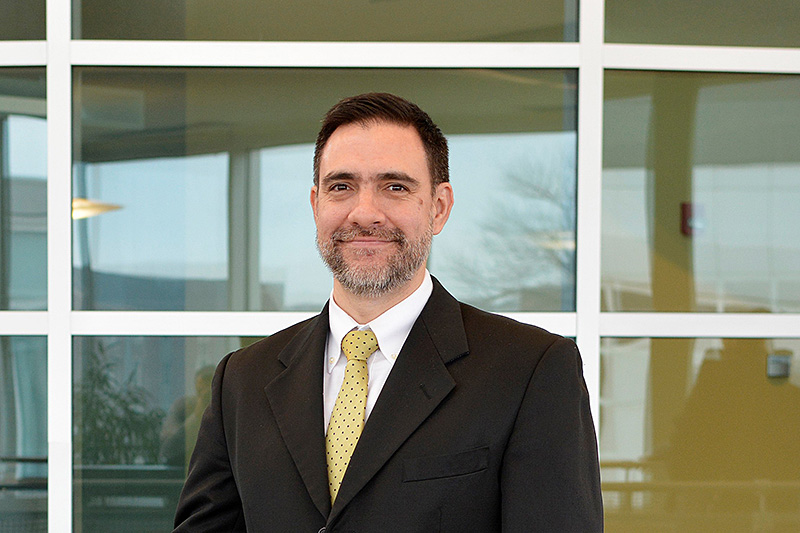February 2, 2021
Digital inclusion in a time of coronavirus: New report explores the state of digital access and rural internet in Indiana
 Roberto Gallardo (Photo provided)
Roberto Gallardo (Photo provided)
WEST LAFAYETTE, Ind. —During the pandemic, internet has become more important than ever. From streaming meetings and classes, to virtual worship services and telehealth appointments, to ordering groceries and scheduling COVID tests, access to internet can feel like a literal lifeline. It is a lifeline that hundreds of thousands of Hoosiers lack.
A new report by Roberto Gallardo, director of the Purdue University’s Center for Regional Development, calls attention to the point that hundreds of thousands — perhaps even millions — of people in Indiana lack access to reliable internet at speeds of at least 25 megabits per second. The biggest problem, he notes, is that no one fully understands the scope of the problem.
Estimates of how many Hoosiers are without broadband internet range from 261,000 to 4.1 million. That enormous difference is due to different agencies reporting disparate estimates of the data. To address the issue, Gallardo explains in the report, stakeholders, scientists, and policymakers first need to have access to reliable numbers, something they currently lack.
The issue of digital inclusion includes the availability, accessibility and reliability of high-speed internet and digital devices. The gap between those who have easy, reliable, fast access to the internet and those who do not is the “digital divide.”
Gallardo has been studying the digital divide for more than a decade. His previous studies have emphasized how essential broadband access is, even before the pandemic hit. Children and adults without reliable internet access are at a distinct disadvantage.
“COVID-19 has brought to the forefront a decades-old issue of the digital divide,” Gallardo said. “As individuals, organizations and businesses scrambled to remote work, conducting business online, or e-learning, the issue of the digital divide became abundantly clear. With COVID, broadband has become a hot topic.”
Gallardo’s previous studies have worked to define the depth and breadth of the digital divide in Indiana, but such research is difficult to do, due to a lack of clear, cohesive data. Various organizations, including the Federal Communications Commission and Microsoft, track internet usage and speed by location. However, such data is usually at least two years out of date; the most recent publicly available data for researchers is from 2019.
The data that does exist differs wildly depending on the source. For example, the Federal Communications Commission found that about 261,000 residents lacked access to the minimum standard of internet speed: 25 megabits per second download and 3 megabits per second upload. However, Microsoft found that 4.1 million residents did not use the internet at a minimum of 25 Mbps — a significant portion of Indiana’s population of more than 6.7 million.
“Right now, we have too many conflicting data sources,” Gallardo said. “We need better data to assess holistically what digital inclusion looks like in Indiana. Without that data, we can’t solve the problem. We need to raise awareness and be sure that funding and data are available to everyone who needs them.”
Those on the ground agree. Amanda Baird moved with her family from Carmel, a suburb of Indianapolis, to a farm in the small rural county of Tipton two years ago.
“We were stunned,” Baird says. “Everyone up here talks about how bad rural internet is, but I didn’t understand. I thought, ‘Oh, it can’t be that bad.’ But my fastest internet speed now is slower than my slowest internet speed was in Carmel. It is that bad. It is a huge problem in rural communities.”
Rural communities are not the only ones affected. Urban communities struggle with different issues that prevent many of the residents from accessing the internet reliably.
Both Gallardo and Baird note that many steps have been taken, and some progress has been made, in the form of Indiana Gov. Eric Holcomb’s Emergency Education Relief grants, Next-Level Broadband Grants, and other initiatives, including Purdue’s county Extension offices providing WIFI and lists of accessible hotspots during the pandemic.
Gallardo’s report makes five specific recommendations to make Indiana a digitally inclusive state. He suggests gathering more data on broadband availability, revising funding eligibility criteria to ensure funding is available to those who need it, continued support of devices and connectivity for students, increased awareness of digital exclusions and its implications, and incentivizing communities and regions to plan for improved digital inclusion.
About Purdue University
Purdue University is a top public research institution developing practical solutions to today’s toughest challenges. Ranked the No. 5 Most Innovative University in the United States by U.S. News & World Report, Purdue delivers world-changing research and out-of-this-world discovery. Committed to hands-on and online, real-world learning, Purdue offers a transformative education to all. Committed to affordability and accessibility, Purdue has frozen tuition and most fees at 2012-13 levels, enabling more students than ever to graduate debt-free. See how Purdue never stops in the persistent pursuit of the next giant leap at https://purdue.edu/.
Writer, Media contact: Brittany Steff; 765-494-7833; bsteff@purdue.edu.
Journalists visiting campus: Journalists should follow Protect Purdue protocols and the following guidelines:
- Campus is open, but the number of people in spaces may be limited. We will be as accommodating as possible, but you may be asked to step out or report from another location.
- To enable access, particularly to campus buildings, we recommend you contact the Purdue News Service media contact listed on the release to let them know the nature of the visit and where you will be visiting. A News Service representative can facilitate safe access and may escort you on campus.
- Correctly wear face masks inside any campus building, and correctly wear face masks outdoors when social distancing of at least six feet is not possible.
Note to journalists: A copy of the report is available online. Photos are available via Google Drive. Journalists visiting campus should follow visitor health guidelines.

